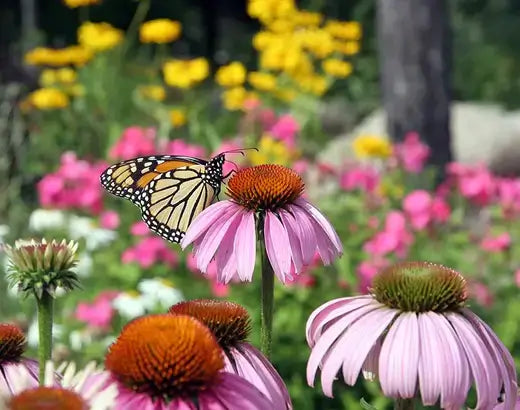Perennial plants are lovely for any garden due to their longevity and ability to return year after year
They come in a wide range, offering endless possibilities for creating a diverse and vibrant green.
In this response, I will provide an overview of some popular types of perennial plants and highlight a selection best suited for your garden.
Daylilies (Hemerocallis): Daylilies are known for their stunning flowers in various colors. They are low-maintenance, adaptable to different soil conditions, and bloom for an extended period, providing continuous beauty.
Hosta's (Hosta spp.): Hosta's are renowned for their attractive foliage, which comes in various shades of green, blue, and gold. They thrive in the shade and add texture and interest to garden beds. They are also easy to grow.
Coneflowers (Echinacea): Coneflowers are drought-tolerant plants that produce beautiful daisy-like flowers in vibrant colors like purple, pink, and white. Pollinators love them and can attract butterflies and bees to your garden.
Black-eyed Susans (Rudbeckia): These cheerful perennials have golden-yellow flowers with dark centers. They are robust, adaptable, and bloom profusely throughout summer, making them an excellent choice for adding pops of color to your garden.
Sedums (Sedum spp.): Sedums are succulent plants in various shapes, sizes, and foliage colors. They are incredibly drought-tolerant and require minimal maintenance. Sedums are often used in rock gardens or as ground covers.
Russian Sage (Perovskia atriplicifolia): Russian Sage is a tall, airy perennial with silvery-gray foliage and lavender-blue flowers. It is a drought-tolerant plant that adds a touch of elegance and attracts butterflies to your garden.
Geraniums (Geranium spp.): Geraniums, also known as cranesbills, offer various flower colors and shapes. They are versatile perennials that can thrive in different soil and light conditions, and their lengthy bloom time adds color throughout the season.
Astilbes (Astilbe spp.): Astilbes are shade-loving perennials that produce plumes of flowers in shades of white, pink, and red.
These perennials add a delicate touch to the garden and thrive in moist soil
Peonies (Paeonia): Peonies are loved for their large, fragrant flowers and lush foliage. They come in various colors and bloom in late spring to early summer. Peonies require well-drained soil and benefit from a sunny location.
Lavender (Lavandula): Lavender is a versatile perennial with aromatic foliage and beautiful spikes of purple flowers. It thrives in the sun and well-drained soil, adding a lovely scent to your garden and attracting pollinators. The selection of the best-suited perennials for your garden depends on various factors such as your location, climate, sunlight exposure, soil conditions, and personal preferences.
It's recommended to research and choose plants that are native or well-adapted to your specific region
Consider the available space, color scheme, and desired aesthetic to create an appealing garden design. Consulting with local gardening experts or visiting nearby nurseries can provide valuable insights and recommendations tailored to your needs.
Tn Nursery https://www.tnnursery.net

